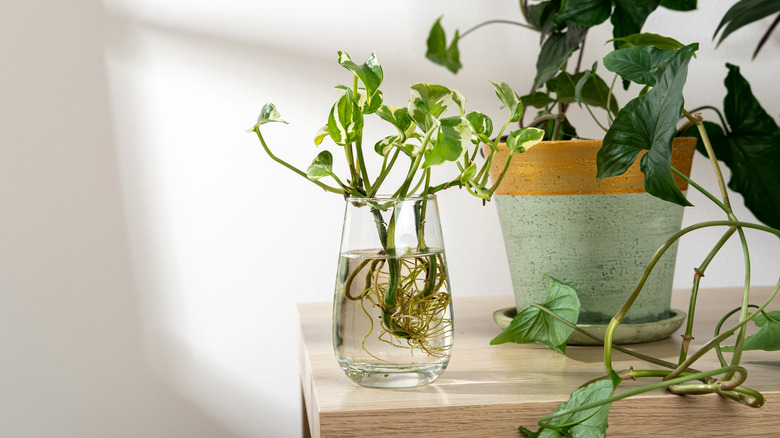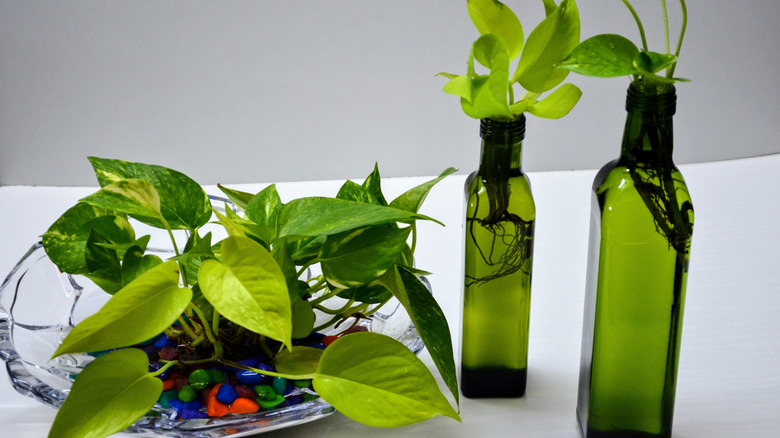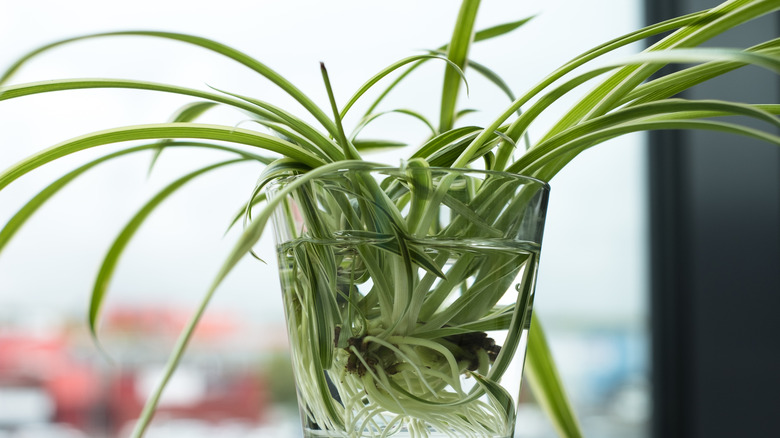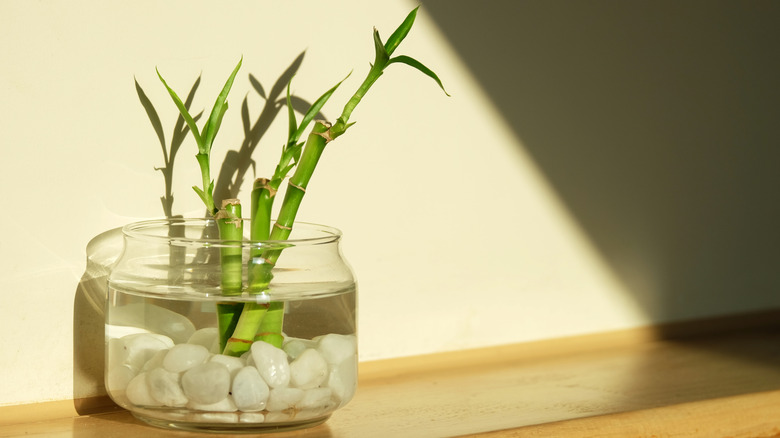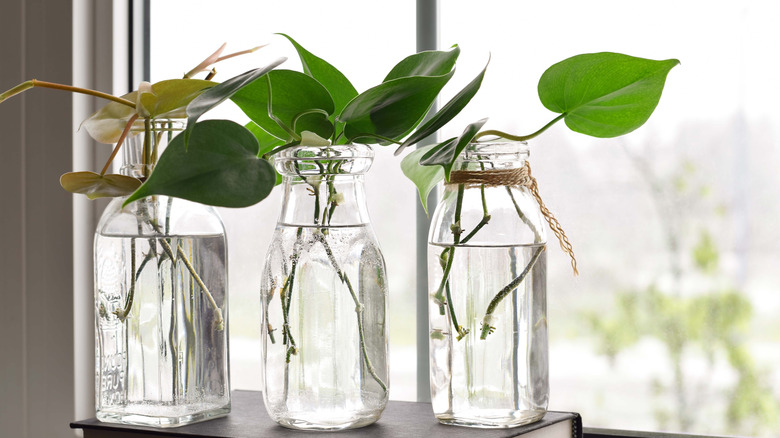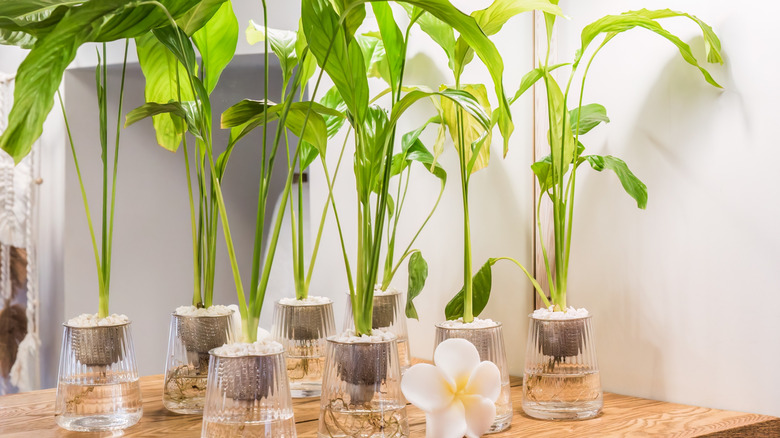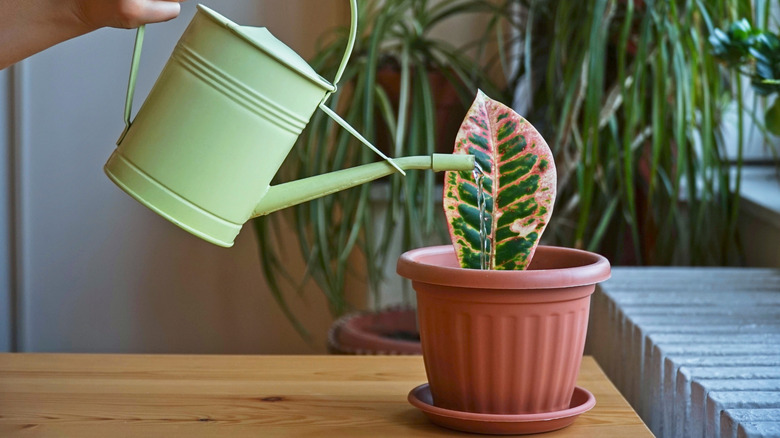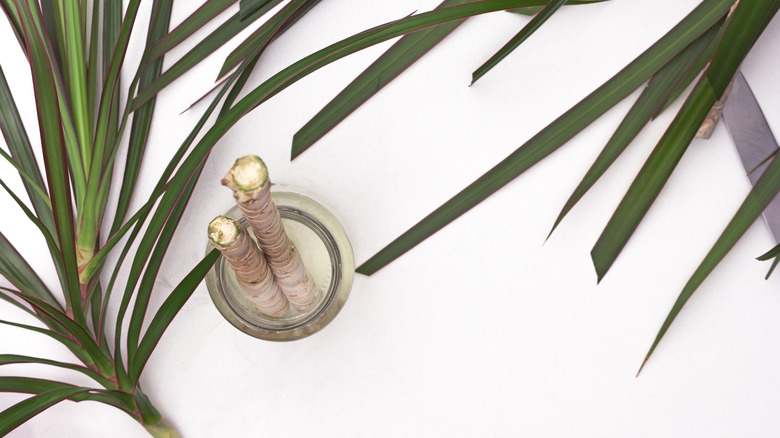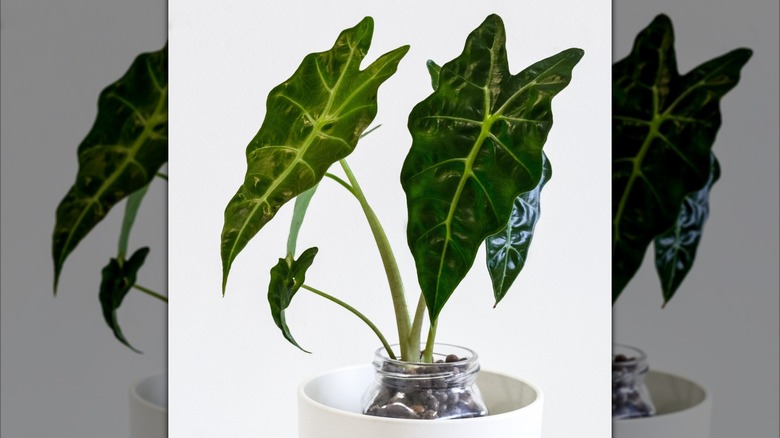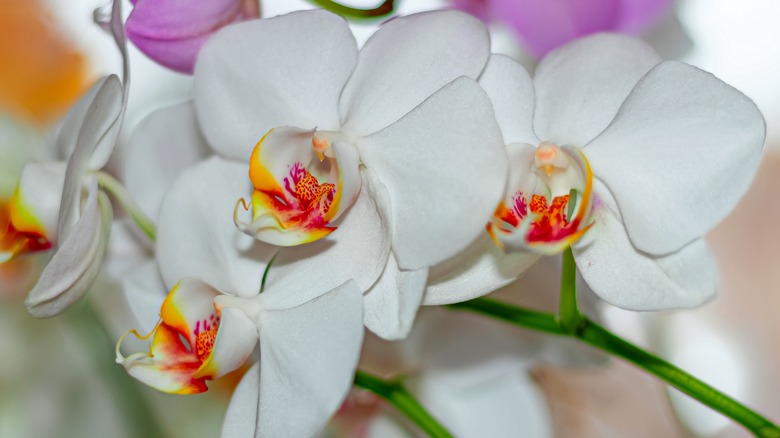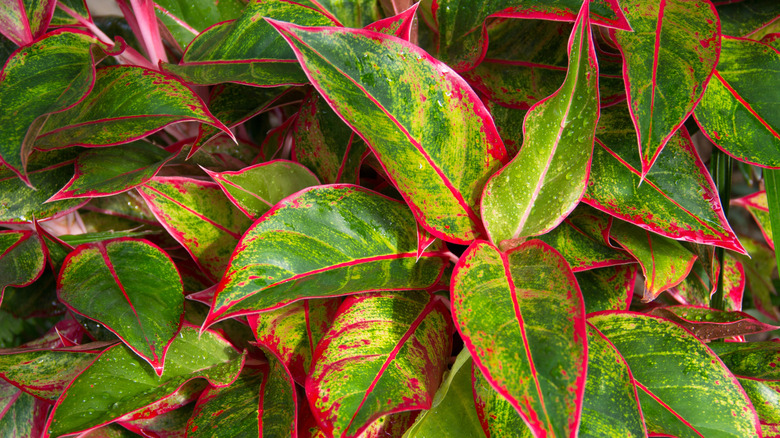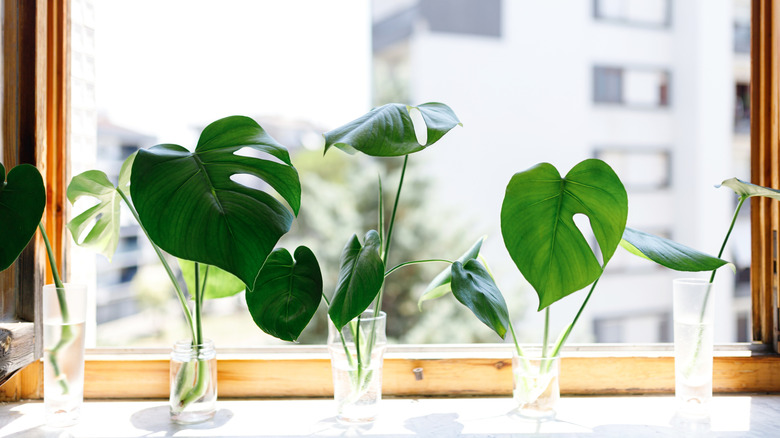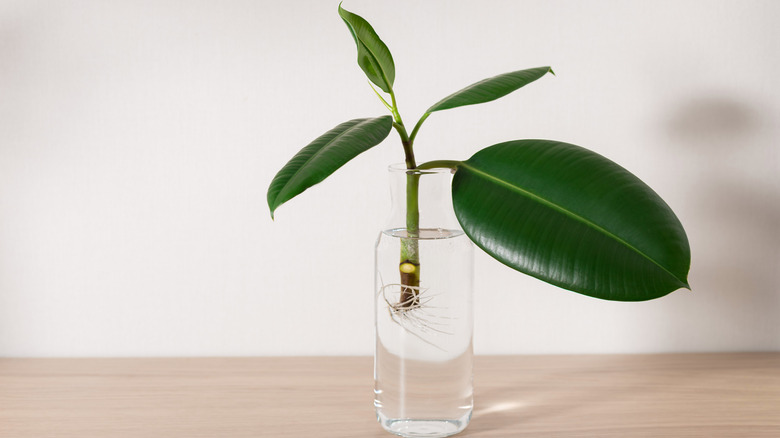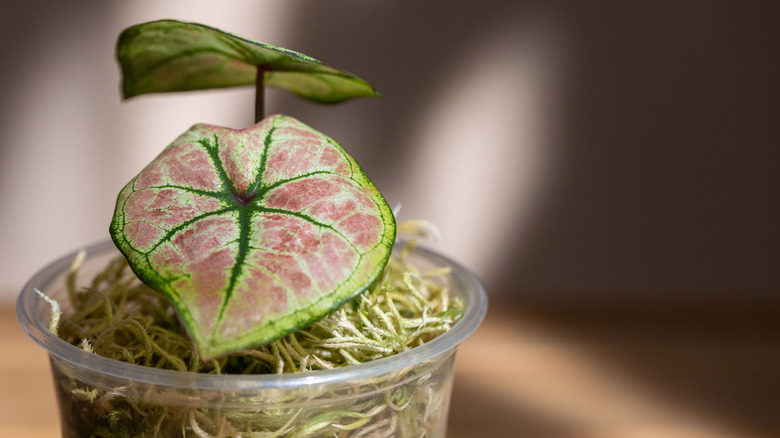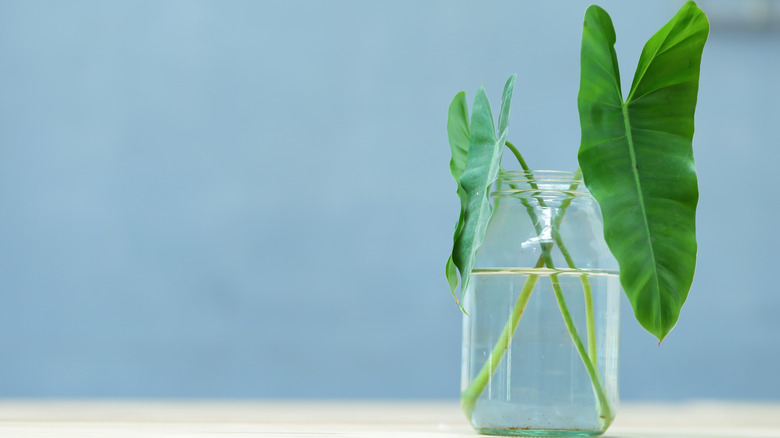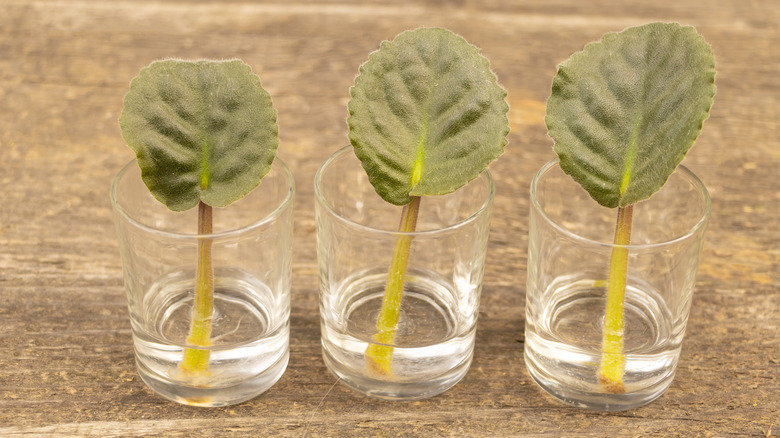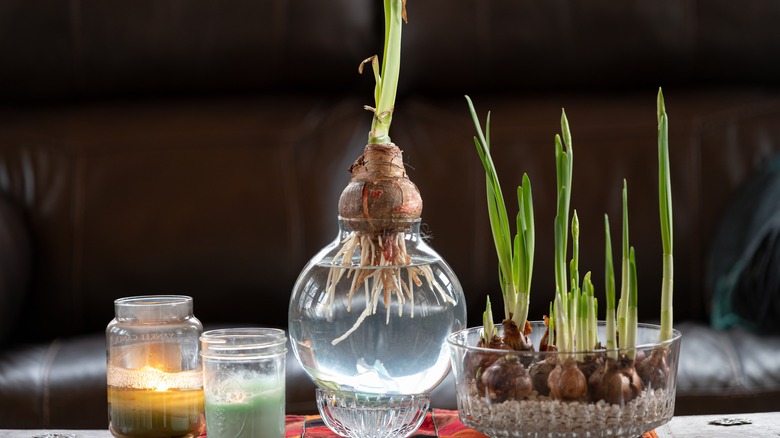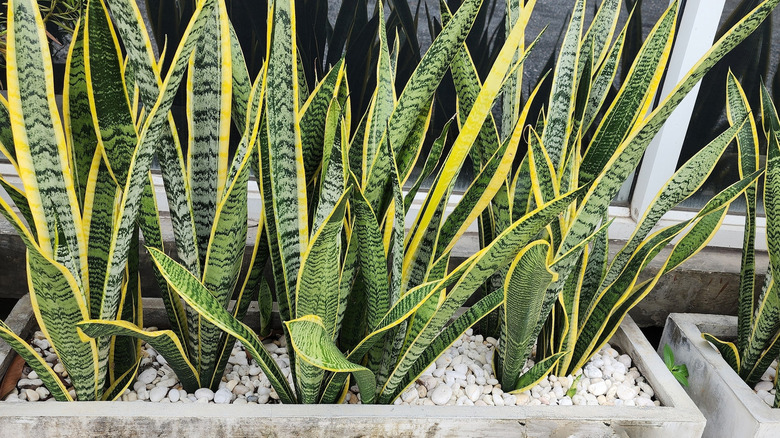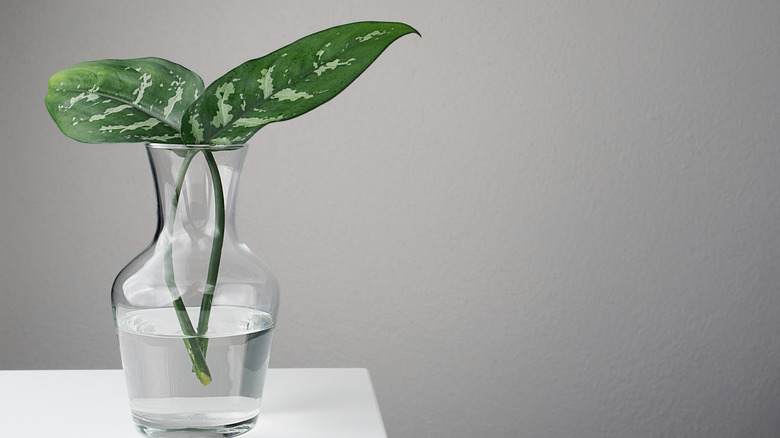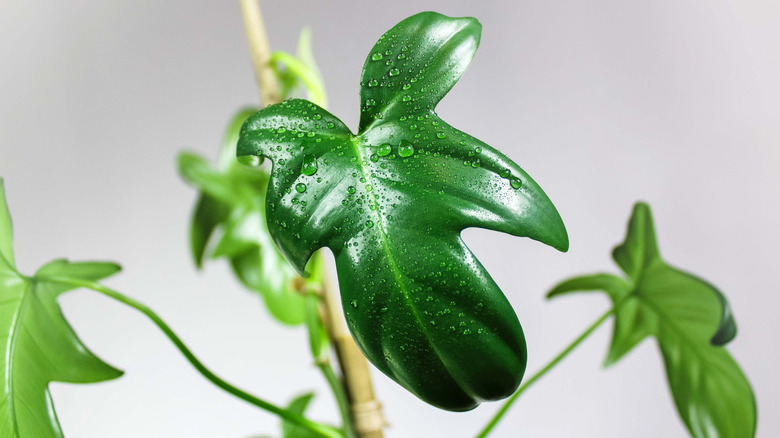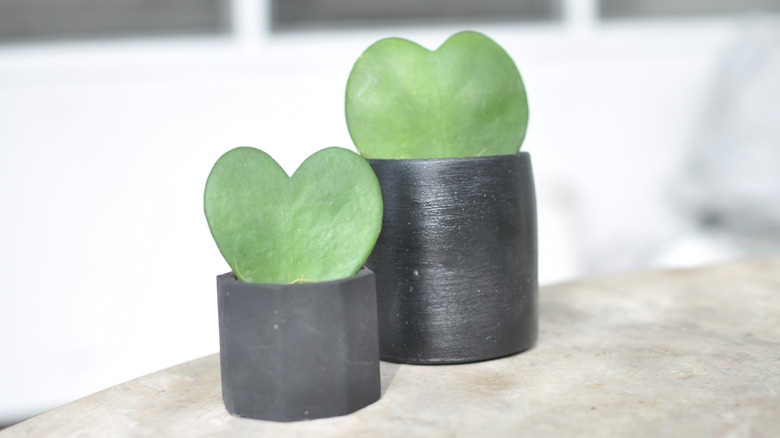20 Houseplants You Can Propagate Or Grow In Water
Propagating houseplants in water is a straightforward, low-waste, and rewarding method to expand your indoor garden. This technique, known as vegetative propagation, involves rooting plant cuttings in water, and it's accessible for both novice and experienced gardeners. Water propagation offers the added benefit of allowing you to observe root development, providing immediate feedback on the process. Many plants, such as pothos and philodendrons, root well in water, often developing roots within 10 days. In most cases, you'll begin by taking a cutting just below a node, then remove the lower leaves, stick it in clean water, and refresh it weekly. Many plants begin rooting in 1 to 4 weeks, depending on the species. Once the roots reach about 2 inches, you can transplant your cutting to soil or continue growing it in water almost indefinitely by adding diluted liquid fertilizer once a month.
Beyond the herbs you can grow in your kitchen without any soil, we'll explore a variety of houseplants — from the classics to the exotic and even the experimental — that propagate or grow well in water. For each one, we'll cover the right way to take cuttings, the conditions they need to thrive, and what to do once roots take hold. So, grab a clear jar and a pair of shears; it's time to grow greener, one cutting at a time.
Pothos
We start with a classic: pothos (Epipremnum aureum). Its heart-shaped leaves and trailing vines thrive in water with minimal effort. To grow a pothos plant without soil, propagate a 4- to 6-inch stem with at least one node and a few healthy leaves, removing any that would sit underwater. They prefer bright, indirect light. You should maintain the water level and replace it weekly. Once the roots reach around 3 inches or more, you can either transplant the cutting to a pot or leave it in water, providing it with monthly feedings of diluted liquid fertilizer.
Spider plant
The spider plant (Chlorophytum comosum) is perfect for water propagation. They produce baby spiderettes (baby spider plants) that root within 1 to 2 weeks in clean water. Keep only the base submerged and refresh the water weekly. Once roots are around 2 inches, transplant or continue growing hydroponically, adding diluted fertilizer monthly. Once all grown up, there are several budget-friendly ways to make spider plants bushier.
Lucky bamboo
Dracaena sanderiana, commonly known as lucky bamboo, is a perennial shrub native to West Africa, belonging to the asparagus family. Despite its common name, it is not a true bamboo. A staple of water propagating, lucky bamboo can be grown without any soil. In fact, it only needs a couple of inches of water to grow happily, but many people use rocks or gravel to keep the plant upright, as you don't want the leaves submerged.
Heartleaf philodendron
Heartleaf philodendron (Philodendron hederaceum) is easy to propagate in water. Snip just below a node and place in clean, room-temperature water. Roots typically appear within two weeks under bright, indirect light. To transplant, wait until the roots are 2 to 3 inches long, then pot the cutting in well-draining soil. You may also continue growing it hydroponically with monthly feedings of diluted liquid fertilizer. This resilient plant is ideal for indoor vining and adapts well to low light.
Peace lily
Native to tropical Central and South America, as well as some islands in the Western Pacific, peace lilies (Spathiphyllum spp.) are no strangers to water. When propagating in water, you'll want to keep the crown and leaves above it to prevent rot. Keep peace lilies in bright, indirect light and change their water every 1 to 2 weeks. They're low-maintenance plants that brighten up indoor spaces with their large leaves, which reach 3 feet high and just as wide.
Croton plant
Croton plants (Codiaeum spp.) propagate in water from cuttings, but it takes longer for roots to appear, often up to a month or more, unless the temperature is between 70 and 80 degrees Fahrenheit and they are kept in bright, indirect sunlight. Before propagating, remove any leaves that will sit below the waterline. Once roots are a few inches long, transfer to soil or continue growing in water with occasional liquid fertilizer.
Dragon plant
The dragon plant (Dracaena spp.) is sensitive to fluoride and chlorine, so it is recommended to avoid tap water and use filtered or rainwater when propagating instead. To get started, cut a 6- to 8-inch stem just below a node using sterilized shears and remove any lower leaves that might dip into the water. Position the cutting in bright, indirect light and change its water weekly to prevent leaf damage and root rot.
African mask plant
African mask plant (Alocasia × amazonica) grows well in water if you separate a healthy offset or rhizome with roots, rinse off the soil, and submerge just its roots in clean water. Change this water weekly and keep the plant in bright, indirect light. Nodes and roots often appear within 2 to 4 weeks, though growth can be slower in cooler conditions.
Moth orchid
The moth orchid (Phalaenopsis spp.) is a beautiful flower you can grow indoors without using any soil. It thrives when its roots remain partially submerged in room‑temperature water–that's changed weekly–in bright but shaded light. New roots develop in 2 to 4 weeks; once they're 2 to 3 inches long, either repot into bark media or continue hydroponically with monthly orchid fertilizer. Avoid soaking the crown to prevent rot.
Chinese evergreen
Originally shaded understory plants, Chinese evergreens (Aglaonema modestum) thrive in moderate indoor light and are low-maintenance houseplants you can easily grow in water. To propagate, cut a healthy 4- to 6-inch stem just below a node using sterilized scissors. Remove lower leaves to expose at least one node, ensuring no leaves are submerged. Strong roots typically develop within 4 to 6 weeks for Chinese evergreens, at which point you can replant them if you wish.
Swiss cheese plant
To propagate a Swiss cheese plant (Monstera deliciosa) indoors, you'll need just a bit of water. Select a healthy stem with at least one node and an axillary bud (found at the leaf axis). Give your cutting it bright, indirect light, and change the water every 5 to 7 days. Its Latin name, meaning "monstrous" and "delicious" or "delicate," references its large, perforated leaves and uniquely flavored fruit that can be eaten when ripe.
Rubber plant
To propagate a rubber plant (Ficus elastica) in water, use sterilized shears to take a cutting just below a node. Remove the lower leaves to expose at least one node, ensuring no leaves are submerged when it's placed into water. Change the water every 5 to 7 days to prevent stagnation, and new roots will typically develop within 4 to 6 weeks.
Caladium
Prized for its vibrant leaves, caladium (Caladium spp.) thrives in water. To propagate caladium, more commonly known as "elephant ears," select a healthy stem with at least one leaf and a portion of the brown tuber attached. Place the cutting in a glass of water, with the node submerged and the leaf above the waterline. Give it bright, indirect light, and change the water weekly to encourage new root growth.
Arrowhead vine
The arrowhead vine (Syngonium podophyllum) is a fast-growing and popular houseplant that displays elegant, arrow-shaped leaves. To quickly propagate Syngonium in water, use sterilized shears to cut a 4- to 6-inch stem just below a node. Remove the lower leaves before placing the stem in a glass of water to prevent them from rotting. With at least one node submerged, roots typically develop within 1 to 2 weeks.
African violet
To propagate African violets (Saintpaulia ionantha) in water, select a healthy leaf without much variegation from the middle row of the plant. Gently remove it by toggling side to side until it detaches, avoiding damage to the leaf. Using sterilized scissors, make an angled cut on the petiole (leaf stem) about 1 to 2 inches below the leaf blade. Place the cutting in a container so that only the stem is submerged in water, keeping the leaf itself dry. African violets take longer to root than arrowhead vines or pothos, taking about a month to sprout new growth.
Paperwhite
To grow paperwhites (Narcissus papyraceus) in water, place bulbs in a shallow dish filled with stones or gravel. Make sure only the base of each bulb is submerged to prevent rot. Position the container in bright, indirect light and maintain a cool room temperature (50 to 60 degrees Fahrenheit) to prolong blooming. Roots typically develop within a week, with fragrant white flowers appearing in 4 to 6 weeks. To prevent tall, floppy stems, consider watering with a 4% to 6% alcohol solution once shoots are 1 to 2 inches tall.
Snake plant
The opposite of finicky, snake plants (Dracaena trifasciata) thrive effortlessly in water. To grow a snake plant in just water and not soil, use sterilized shears to cut a healthy leaf near its base. Allow the cut end to callus over for 1 to 2 days to prevent rot. Then, place the cutting in a glass of water with the bottom inch submerged. Position the container in bright, indirect sunlight and change the water every week.
Dumb cane
To propagate dumb cane (Dieffenbachia spp.) in water, use clean shears to cut a stem section just below a node. Remove any leaves that would be submerged to prevent rot before placing the cutting in a glass of water with at least one node submerged. Give it bright, indirect light and change the water every few days. The name "dumb cane" derives from the plant's toxic sap, which can cause temporary speechlessness if ingested, so keep pets and children away. Despite this toxicity, dumb cane is valued for its lush, variegated leaves and adaptability.
Horsehead philodendron
For those looking for more adventurous houseplants to propagate and don't necessarily have a green thumb, consider the horsehead philodendron (Philodendron bipinnatifidum). To propagate the horsehead philodendron in water, select a healthy stem with at least one node and a few leaves. Using sterilized shears, make a clean cut just below the node. Place the cutting in a glass of water with the node submerged and the leaves above the waterline, removing any leaves near the base to prevent them from sitting in the water.
Hoya heart plant
The Hoya heart plant or sweetheart hoya (Hoya kerrii) can be multiplied through water propagation. The procedure is straightforward and similar to other plants on this list. However, some gardeners suggest using cuttings with more than one node and multiple leaves for greater success. With attentive maintenance, your propagated Hoya kerrii is sure to heart you back.
